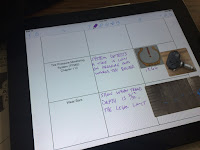Gifs Revisited
After reading about Gifs on the Digital Transformations blog, Ms. +Denise Chapman, Differentiation Specialist, got to thinking. Could using moving images help her students, especially her Special Education students, better demonstrate their knowledge on assessments?
Ms. Chapman decided to try out her theory on the Foods 1 final exam. On the assessment, the students need to identify certain cooking terms like “saute”, “mince”, and “slice”. In order to assess their knowledge, Ms. Chapman found videos of these terms, created a short gif for each, and then inserted the image into the +Schoology quiz. The result can be seen in the video below:
Pretty awesome, right?
As Ms. Chapman explained,
Using these gifs helps with inclusion in the classroom. Just as different types of students learn in different ways, they also show what they learned differently. In order for any test in a mainstream course to be meaningful for a Special Education student, they should be assessed in a way that best fits their needs. While the student might not be able to recite a definition for the word “slice”, if they can pair the picture with the word, they would be able to demonstrate their understanding and ability to execute that in a recipe. Utilizing the gifs gives students the opportunity to access prior knowledge (i.e. the labs and demonstrations in Foods) to show what they’ve learned. Gifs are basically a universal language, which is especially awesome for dual-identified students (Special Ed and EL) and low-level readers.
This idea could even be used in the learning phase when students are first introduced to concepts. The power of the moving image helps the students to see action in the terms and connect it with real-life. This is a valuable tool for all of our learners.
Interested in trying it out and want to bounce around some ideas, learn how to use and create gifs, or just get a little support? Talk to Ms. +Dawn Bodden or one of your DTCs!


Comments
Post a Comment